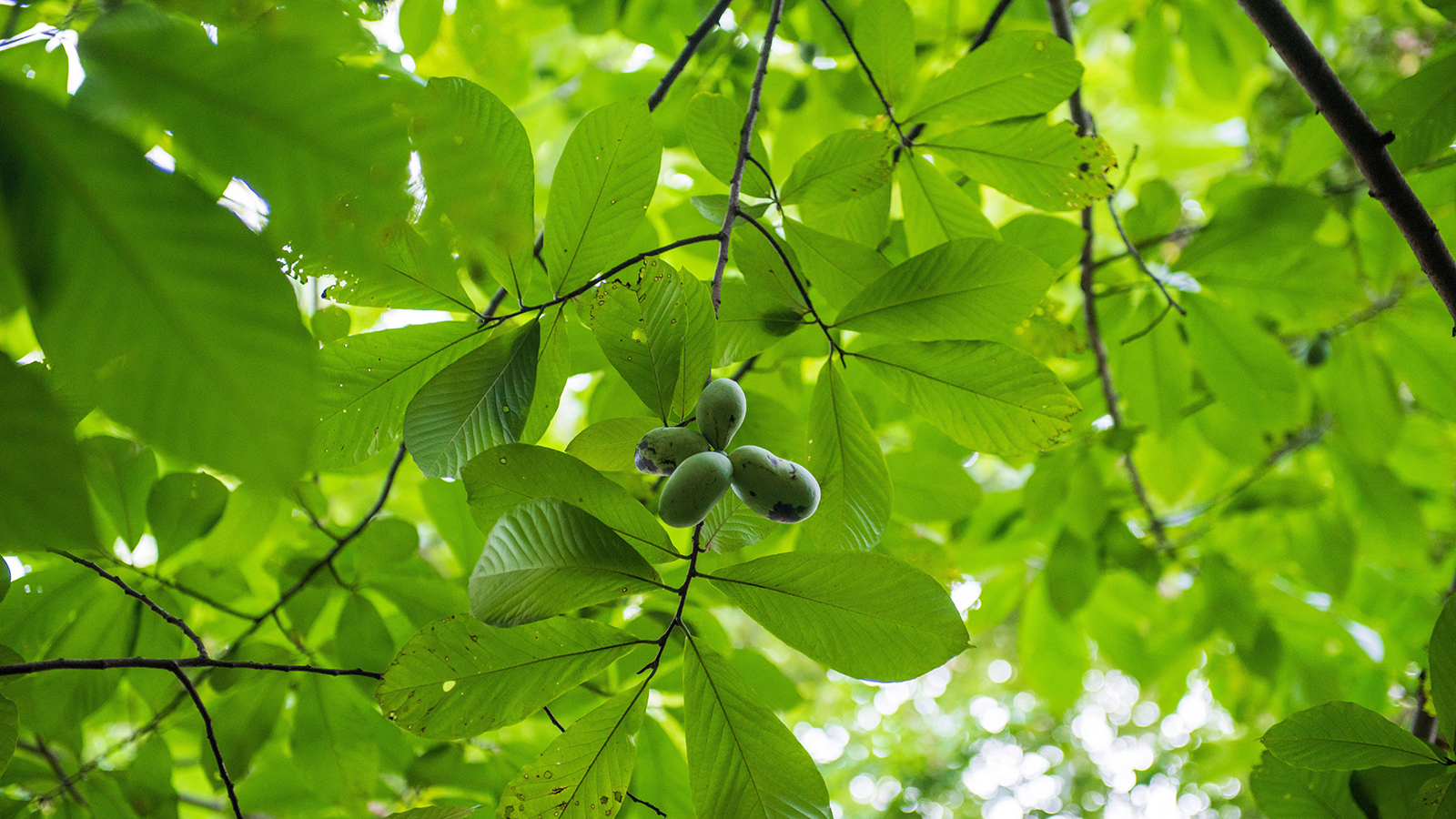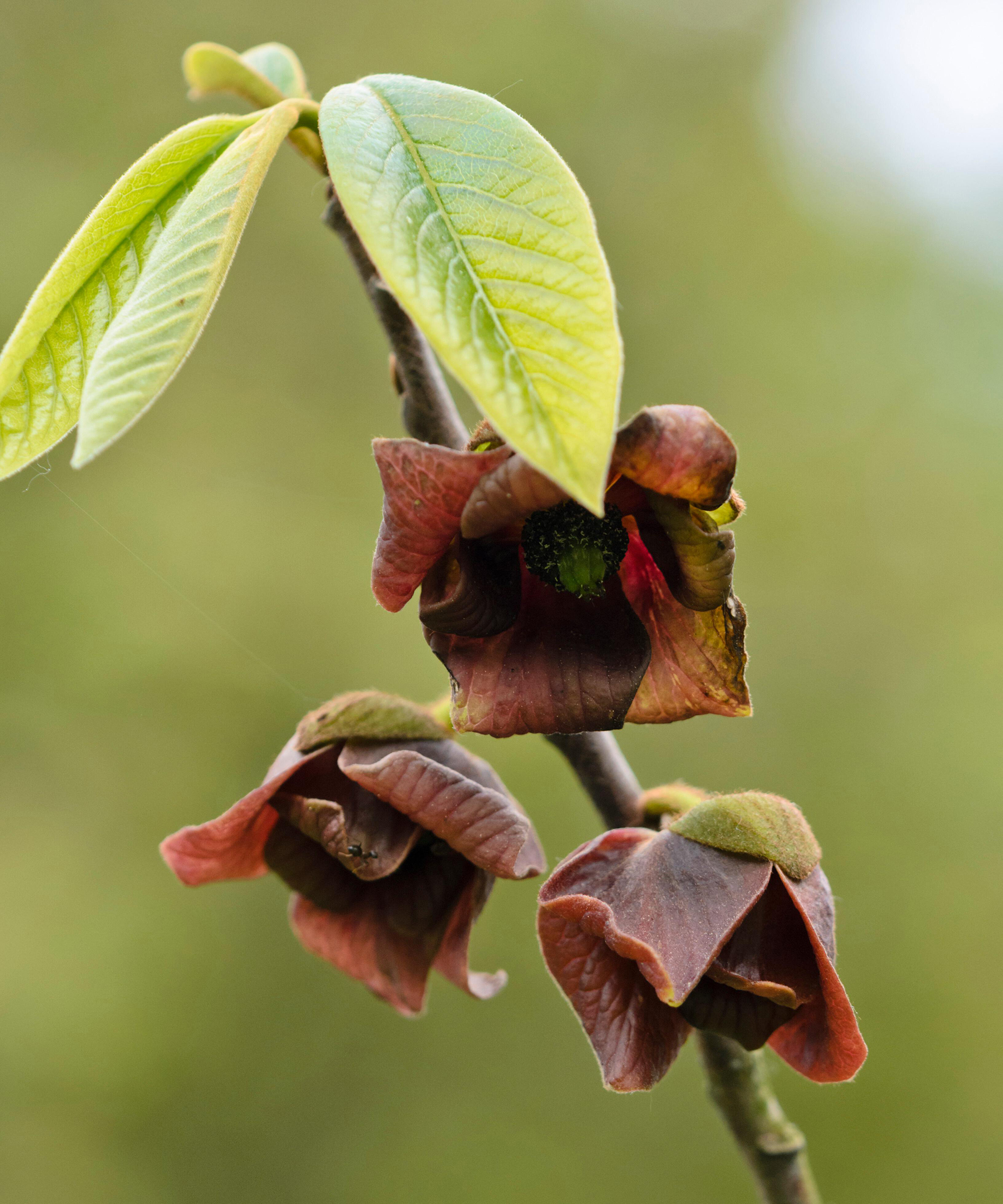Pawpaw tree care and growing guide –expert tips on these native fruit trees
Learn how to grow pawpaw trees for their spring blooms, lush foliage and unusual, nutritious fruits


The pawpaw, Asimina triloba, is a fruit tree or large shrub that’s a member of the custard apple family. It makes a great addition to the backyard, both for its tasty and nutritious fruit and its ornamental qualities.
Despite being recognised as the largest edible fruit native to North America, it has been a somewhat forgotten food. Currently, however, it’s enjoying a revival in fortunes as we re-examine our native plant heritage. There are new cultivars available and the number of pawpaw farmers is increasing.
The pawpaw tree has extraordinary maroon flowers in spring, that are around 2in across and appear on bare stems. These are followed by large yellowish-green fruits, looking a little like long mangoes that grow in clusters - they are sometimes known as false or wild bananas.
These fruit trees also have large, oval leaves which give great fall coloring.

Dark maroon flowers are followed by nutritious edible fruits
Pawpaw trees: key facts
- Plant type: Fruiting tree
- Mature size: 20-30ft
- Soil type: Fertile, moist, well-drained
- Soil PH: Slightly acidic to neutral
- Time of year to plant: Fall
- Flowering time of year: Spring
- Flower color: Maroon
- Hardiness zones: USDA 5-9
- Scientific name: Asimina triloba
- Common name: Pawpaw, custard apple, Indiana banana, wild banana
Different types of pawpaw tree

The Asimina triloba 'Prima' is self fertile
The Asimina genus includes around eight species in eastern North America, including Asimina obovata, also called the ‘bigflower pawpaw’ that’s a more drought-tolerant tree native to Florida and better suited to drier locations.
You can buy bare root pawpaws, such as Bare Root Pawpaw (Asimina triloba) at The Monticello Shop. Alternatively you can go for more developed options such as American Paw Paw Tree at Fast Growing Trees which start at 1-2ft.
There are as many as 30 named cultivars, and while pawpaws generally need to be planted in pairs to encourage pollination, there are some reportedly self-fertile varieties such as Asimina triloba ‘Sunflower’, Asimina triloba ‘Prima’, Asimina triloba ‘Davis’.
Design expertise in your inbox – from inspiring decorating ideas and beautiful celebrity homes to practical gardening advice and shopping round-ups.
Pawpaw guru, Neal Peterson from Peterson PawPaws has bred several patented named varieties with fruits that are larger and more fleshy and these include: ’Allegheny’, ‘Potomac’, ‘Rappahannock’, ‘Shenandoah’, ‘Susquehanna’, ‘Tallahatchie’.
Where to plant pawpaw in your yard

A mature pawpaw tree can reach up to 30ft tall
Pawpaw are deciduous trees with a very attractive upright habit and natural pyramid form – their compact size and year-round interest make them good trees for small gardens, particularly where they will benefit from a sheltered location. You'll be rewarded with a tree for fall color, spring flowers, foliage, and fruit.
Plant pawpaws in pairs or in a row, as you might for an orchard, 10ft apart to allow for effective fruiting and harvesting. You could also exploit them as understory trees, landscaping around trees that are taller, as long as they aren’t in heavy shade; then plant beneath them to create a productive, ornamental border.
The best plants under trees might include fruit bushes such as blueberries and huckleberries with strawberries for ground cover to create a woodland garden effect.
When and how to plant a pawpaw tree

Try underplanting the pawpaw with fruit bushes
Growing pawpaws can be tricky for beginners as they need quite specific conditions to get established. The most important rule to remember is to plant trees in pairs, as they will not fruit when they are solo.
Plant bare root trees, young saplings or pot grown grafted trees directly into the ground in fall or early spring. Soil should be acid to neutral, fertile and moist but well drained.
These are trees native to forest edges, growing with shelter as shade trees, from taller specimens, and plenty of leaf litter on the ground, so it’s important to try and replicate these conditions, by adding lots of good organic matter to the planting area. And choose a sheltered spot where young plants are not exposed to excessive wind.
Pawpaws also like plenty of moisture and need to be kept well-watered in the early years. However, when choosing a tree, bear in mind that while pawpaw do well in damp soils, they don’t respond well to boggy or swampy situations. They don’t require much pruning other than to remove dead wood and damaged branches.
How to propagate a pawpaw

Save seeds from your pawpaw for planting more trees
It is possible to save the seed from pawpaw fruits and get free seeds. You can grow your own trees, providing seeds get the right amount of chilling to encourage germination. However, seeds from named cultivars grown as grafted trees will not come true to their cultivated parent.
For more expert gardeners, you can plant fruit trees using traditional grafting methods – do this in late spring as leaves are appearing on your chosen rootstock. Young scions can grow very fast over the first summer, so do remember to stake them and protect them from bird damage.
Neal Peterson says: 'It is important to graft when the weather is suitable ― warm, sunny, not windy, in other words, a perfect spring day. Cloudy, cool, rainy and blustery conditions are not ideal, and the results may disappoint you. If the rootstock is small (1/4-1/2in) then I use a whip graft. For larger stock (1-3in) I use bark inlay technique.'

Neal is the founder of Person Pawpaws, a specialist seller of premium pawpaw varieties across the United States.
Common problems with pawpaw trees

The larvae of the Zebra swallowtail butterfly enjoy eating the leaves of the pawpaw
Pawpaw trees are not generally prone to much damage from pests and disease, although there are native insects that use the tree as part of their lifecycle. The leaves are a favorite food for the larvae of the zebra swallowtail butterfly, but while this damage may harm younger trees, it won’t affect fruit production on mature pawpaws, so you needn't worry overly.
Pawpaw Peduncle Borer is a small native moth and the larvae feed on the flowers, so this can kill the flower which will mean crop losses. The Pawpaw webworm is more destructive, with larvae feeding on the tips of branches and killing the leaves. However, as it affects trees in late summer, there is no real harm done to the growth of the tree.
The other common problem with growing pawpaws is that it can be difficult for fruit to set successfully. You need to have two trees for good cross pollination and fruiting, and these may need a helping hand.
They are not pollinated by bees, but by flies and beetles. If hand pollinating, use a soft brush to transfer the pollen from the flowers of one tree to its partner tree.
FAQs
How tall do pawpaw trees get?
Pawpaws make great small trees, growing to approximately 20ft high over a span of around 20 years. But older trees can grow much taller in the right setting and trees can have a very long lifespan.
How long does it take to grow a pawpaw tree?
It is possible to grow pawpaws from seed saved from the fruits, but they are not fast growing trees as they need a long period of cold to break dormancy and germinate. The large seeds look a little like broad or lima beans.
Pawpaw grower Susan Owen, from The Lily Patch Farm in North Carolina, starts around 400 trees from seed every year. She says whatever you do, don’t let the seeds dry out: 'When you take seeds from the fruit, you have to keep them moist or store them in the fridge and keep them damp; or plant them direct – but they are difficult to transplant so choose your spot.'
You can sow seeds into pots and grow on before planting out, but bear in mind that if grown from seed, a pawpaw tree can take up to nine years to produce fruit. If you buy grafted pawpaw trees, around 2-3 years old, you should be able to harvest fruits within five years.

Susan Owen of The Lily Patch Farm is an expert in growing, selling and harvesting pawpaws as well as an array of other plants and edibles.
Can you eat pawpaw fruit?
Pawpaw are flowering trees in springtime, covered in maroon leaves. Afterwards the fruits form, and ripen from late summer to fall. Ripe pawpaw fruit usually has a yellow skin, is slightly soft to the touch and is wonderfully fragrant. They will naturally fall from the tree but can be picked with a gentle pull.
The soft, orangey flesh has a sweet, creamy consistency. However, they don’t store well and spoil quickly, so the fruits are best eaten soon after picking. Scoop the flesh straight from the fruit or use for pawpaw ice cream, puddings and cheesecakes.
However you choose to eat the fruits, the pawpaw makes a great addition to your diet, being high in protein, antioxidants, vitamins A and C and essential minerals.
Pawpaw trees are wonderful native varieties, and if you're interested in the advantages of opting for indigenous species in your backyard, you can read more about it in our guide to native planting.
For more information, see our guide on how to prune pawpaw trees.

In her years of gardening, Camilla has designed planting schemes for gardens large and small in and around London, written about plants and how to grow them, and worked on BBC gardening TV shows in the UK. She's also works as a therapeutic horticulturist, teaching growing for wellbeing and mental health.